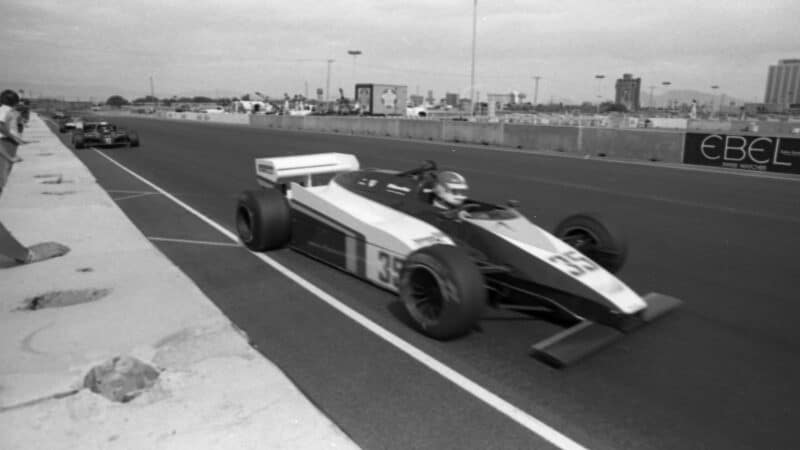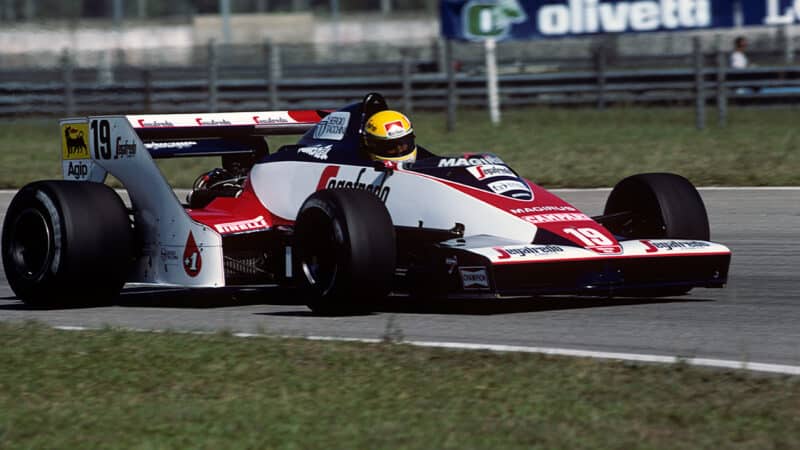“We were turning up at races with no chance of winning. But there was great morale – the team knew what the ambition was.”
They’d need it, as 1982 again delivered just two race finishes. At the end of that year though, there was finally light at the end of the tunnel, and it came in the form of the TG183B.
The car went through the same crisis-management that most other teams faced at the start of ’83 – the FIA banned ground effect on the eve of the season, meaning all participants had to come up with a new design overnight.
With its quirky features, the TG183B was without doubt one of the most creative solutions to this last-minute problem.
“We produced a ground effect car at the end of ’82 called 183 which was going to be our car for the following year – it raced at Monza and Las Vegas [in ’82] – which had sliding skirts and everything,” says Witty.

Warwick in the original ground effect TG183
Getty Images
“Pat, Rory and John Gentry had done some really nice work with the 183 – it had a pointed nose, with a little radiator inlet at the front – and then they had to redesign the car.
“It was just: downforce, downforce, downforce, and because the Hart engine was an aluminium monobloc design, it needed a lot of cooling.”
There was early proof that the design team had taken the right re-direction.
“Jenks and Roebuck were almost in tears” Derek Warwick
“We went to the ’83 pre-season Rio test with Warwick and actually were very quick,” says Witty. “There were a lot of magazines saying ‘Is this a real time?’”
Warwick proved it was by qualifying fifth and sixth in the first two races, but struggled to translate the pace into race results – with several reliability issues related to the Hart turbo.
“It was still unreliable,” explained Warwick in 2010. “For cost reasons we were using a Garrett turbo off a Magirus truck, and they kept breaking.
“Then we switched to a Holset turbo, and at once it came right.”











